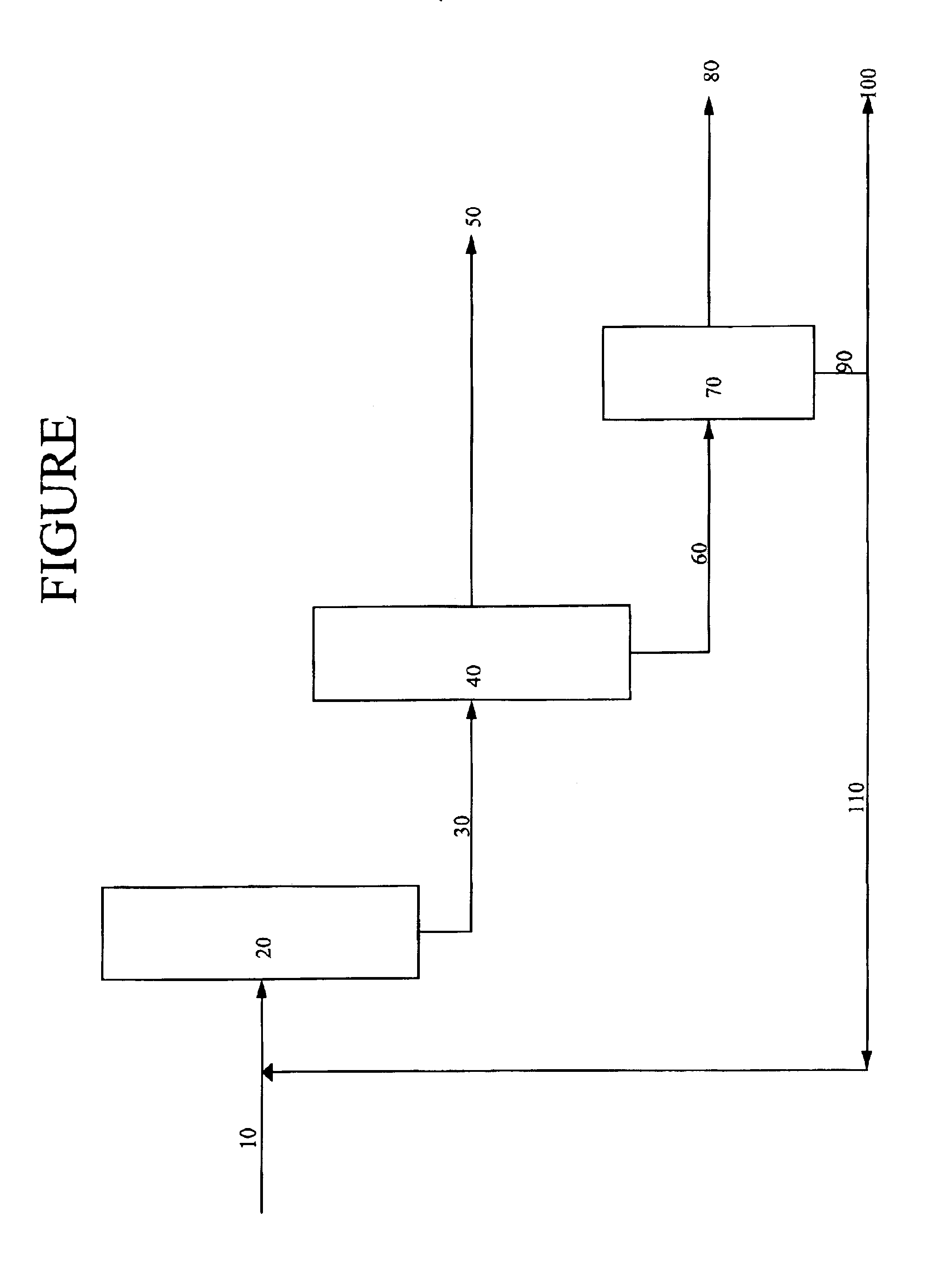Method for producing a plurality of lubricant base oils from paraffinic feedstock
a paraffinic feedstock and lubricant base oil technology, applied in the field of paraffinic feedstock lubricant base oil preparation, can solve the problems of increasing production cost and complexity, and inability to effectively hydroisomerize a broad boiling range of hydrocarbonaceous high waxy feedstock
- Summary
- Abstract
- Description
- Claims
- Application Information
AI Technical Summary
Problems solved by technology
Method used
Image
Examples
Embodiment Construction
[0019]According to the present invention, a process is provided for producing a plurality of lubricant base oils from a paraffinic feedstock. The process involves hydroisomerizing a paraffinic feedstock to produce an isomerized product, separating the isomerized product into at least a light lubricant base oil and an heavy fraction, and dehazing the heavy fraction.
[0020]By using the process of the present invention, a broad boiling range paraffinic feedstock (i.e., a paraffinic feedstock having an initial boiling point of less than 750° F. and an end boiling point of greater than 900° F., and more preferably having an initial boiling point of less than 725° F. and an end boiling point of greater than 950° F., may be used to produce both a heavy lubricant base oil and a light lubricant base oil having acceptable properties. Acceptable properties of light lubricant base oils include initial boiling points in the range of 600 to 750° F. and end boiling points in the range of 800 to 960...
PUM
| Property | Measurement | Unit |
|---|---|---|
| cloud point | aaaaa | aaaaa |
| pour point | aaaaa | aaaaa |
| cloud point | aaaaa | aaaaa |
Abstract
Description
Claims
Application Information
 Login to View More
Login to View More - R&D
- Intellectual Property
- Life Sciences
- Materials
- Tech Scout
- Unparalleled Data Quality
- Higher Quality Content
- 60% Fewer Hallucinations
Browse by: Latest US Patents, China's latest patents, Technical Efficacy Thesaurus, Application Domain, Technology Topic, Popular Technical Reports.
© 2025 PatSnap. All rights reserved.Legal|Privacy policy|Modern Slavery Act Transparency Statement|Sitemap|About US| Contact US: help@patsnap.com

